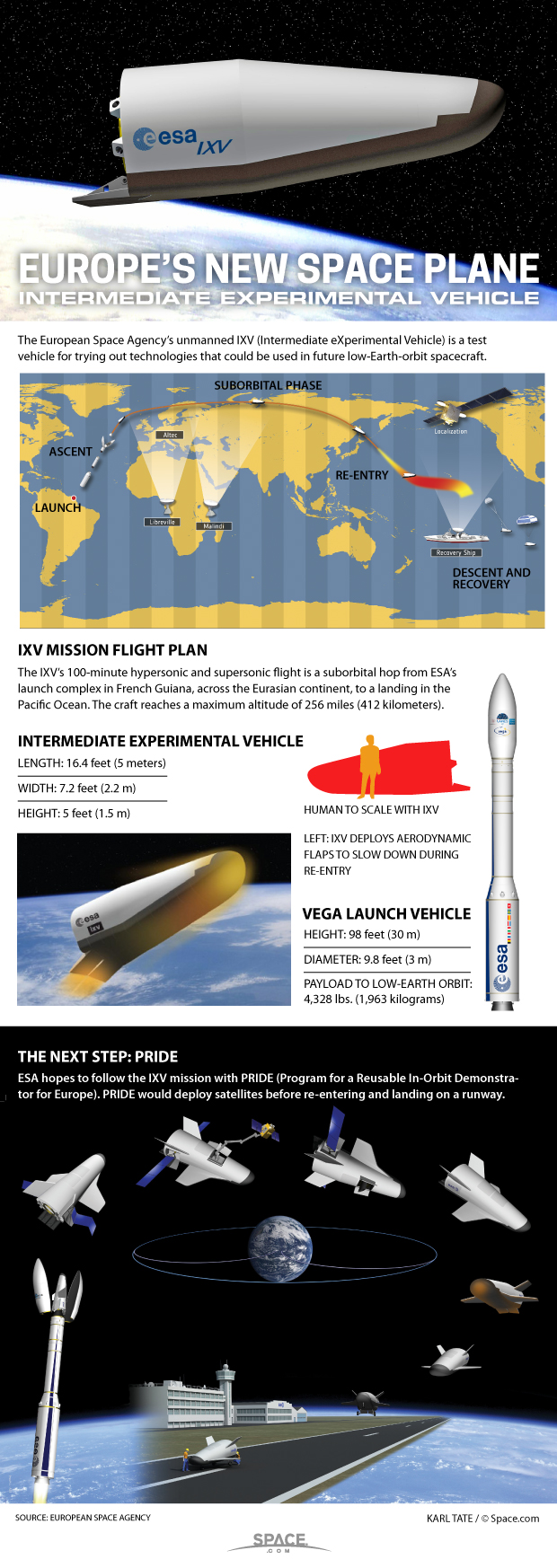How Europe's IXV Space Plane Works (Infographic)

The European Space Agency's unmanned IXV (Intermediate eXperimental Vehicle) is a test vehicle for trying out technologies that could be used in future low-Earth-orbit spacecraft. It will make its first test flight in February 2015. An Arianespace Vega rocket will launch the IXV during the mission.
Europe's IXV Space Plane in Photos
The IXV's 100-minute hypersonic and supersonic flight is a suborbital hop from the Guiana Space Center — Europe's launch complex in French Guiana. The mission will launch the IXV spacecraft over the Eurasian continent and is aimed at a landing zone in the Pacific Ocean, where a recovery ship will fish it from the sea. The craft reaches a maximum altitude of 256 miles (412 kilometers).
The IXV space plane is a wingless spacecraft with a lifting body design, which means the vehicle's aerodynamic shape gives it the lift it needs to stay aloft. Two aft-mounted flaps will steer the spacecraft during its descent.
The spacecraft's belly is covered in protective heat-resistant panels made of carbon fibers that have been woven into a ceramic matrix. An infrared camera and 300 sensors on the heat shield will map the heat flow on IXV's belly during re-entry.
ESA hopes to follow the IXV mission with PRIDE (Program for a Reusable In-Orbit Demonstrator for Europe). PRIDE would deploy satellites before re-entering and landing on a runway.
- Surviving as a Man-Made Meteor: ESA's IXV Spacecraft
- Space Planes: Evolution of the Winged Spaceship (Infographic)
- Reusable Rocket Launch Systems: How They Work (Infographic)
Follow us @Spacedotcom, Facebook and Google+.
Breaking space news, the latest updates on rocket launches, skywatching events and more!

Karl's association with Space.com goes back to 2000, when he was hired to produce interactive Flash graphics. From 2010 to 2016, Karl worked as an infographics specialist across all editorial properties of Purch (formerly known as TechMediaNetwork). Before joining Space.com, Karl spent 11 years at the New York headquarters of The Associated Press, creating news graphics for use around the world in newspapers and on the web. He has a degree in graphic design from Louisiana State University and now works as a freelance graphic designer in New York City.
